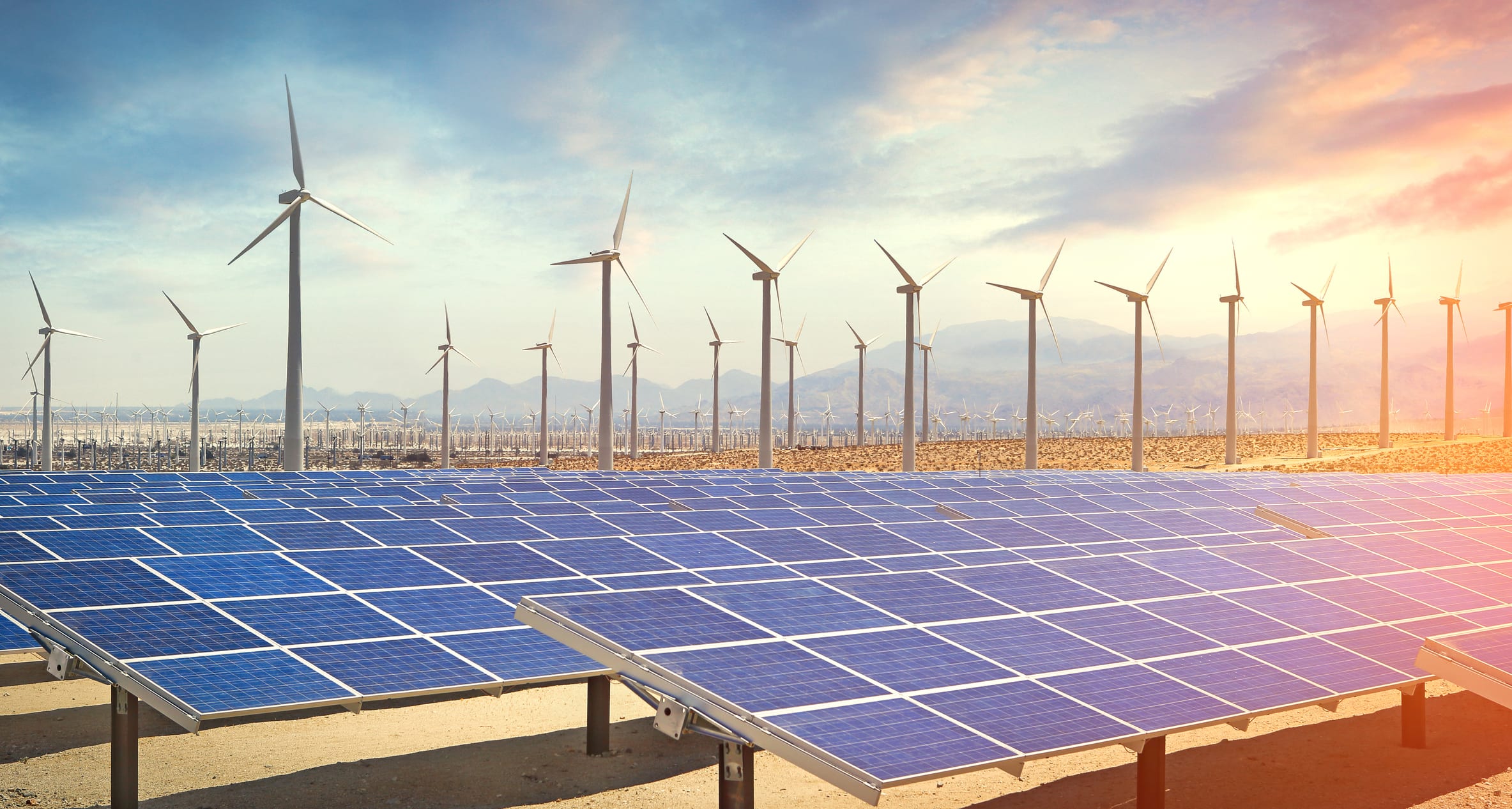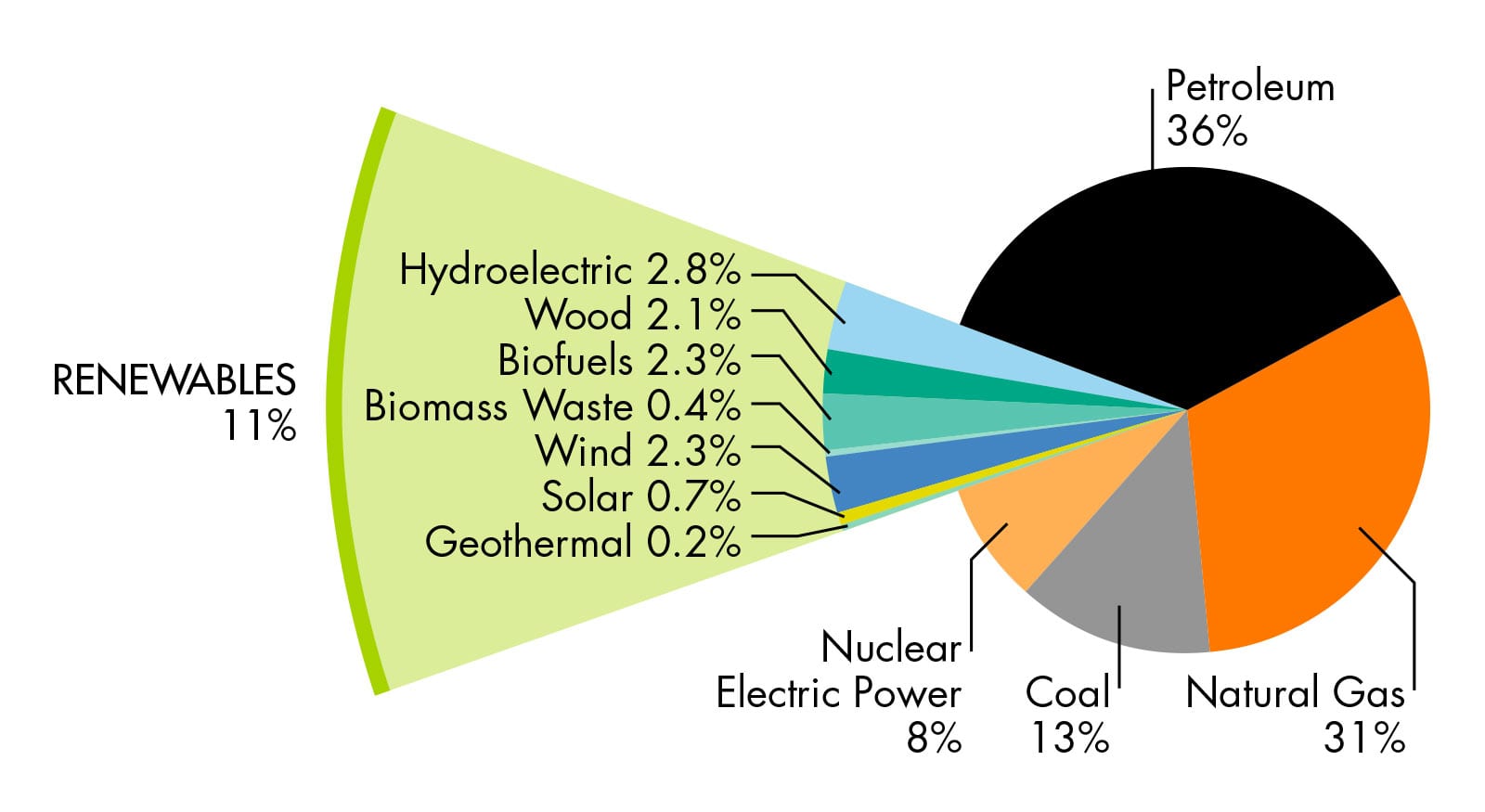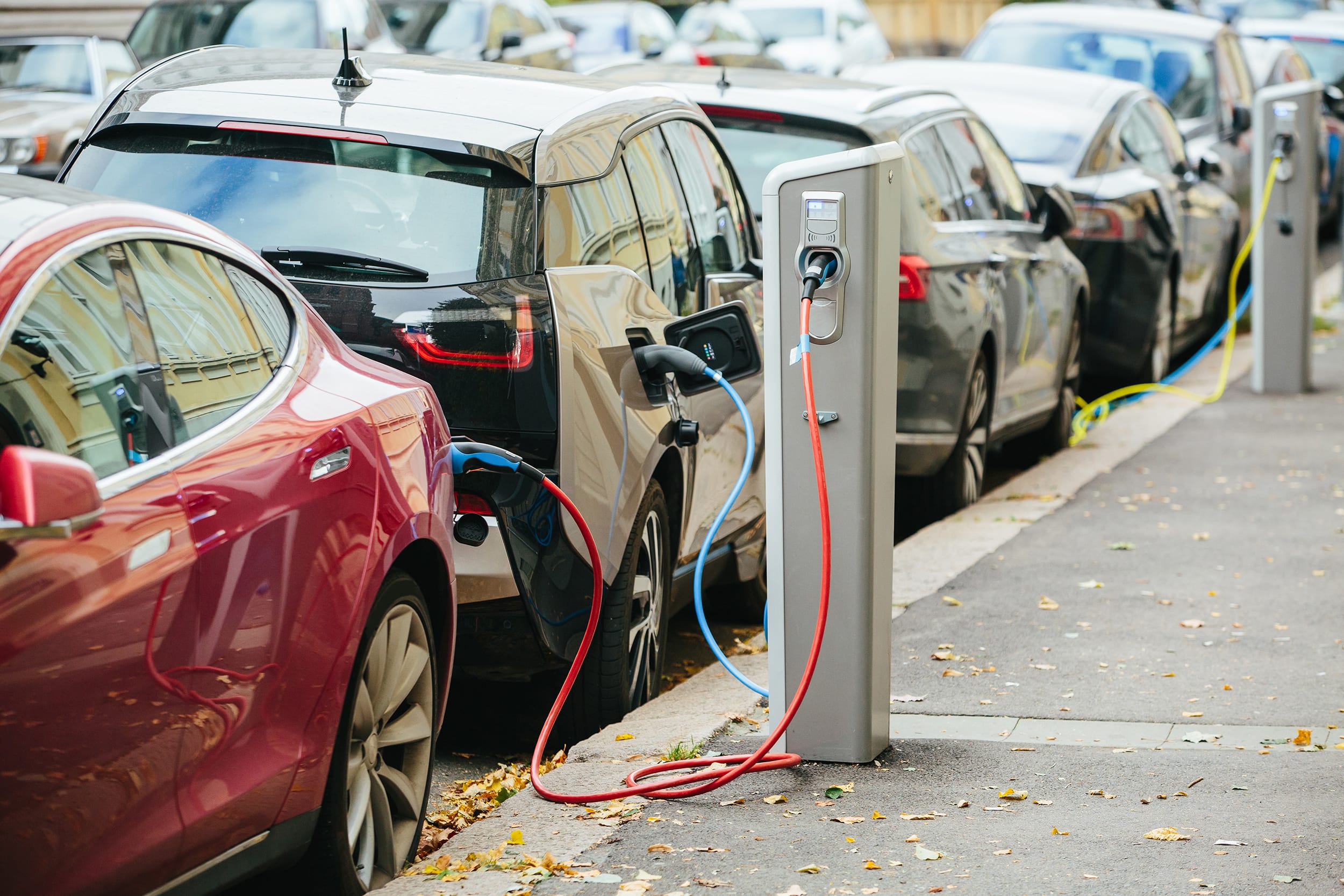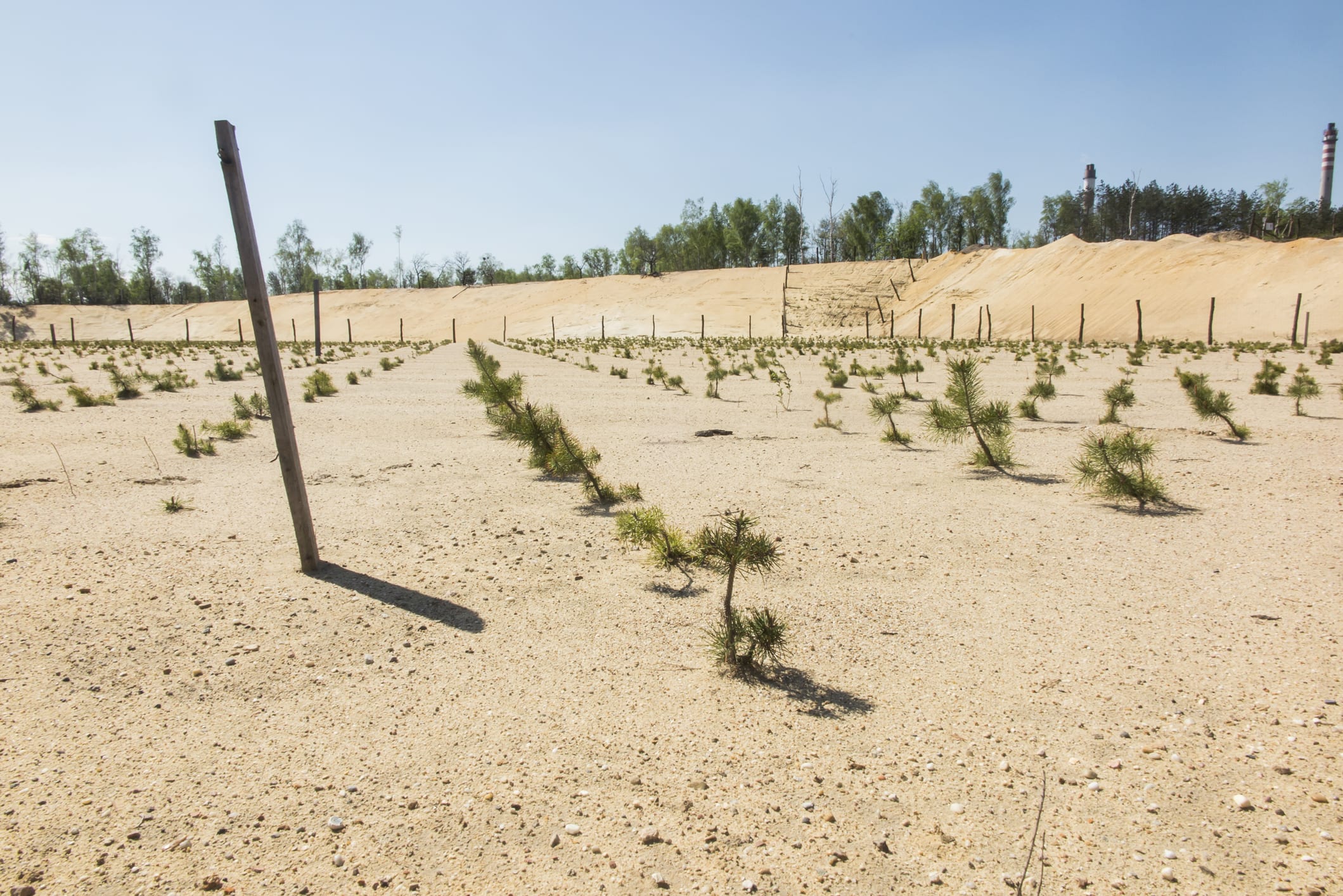How are we doing with meeting those goals?
Earth’s surface atmosphere already has warmed about 1.8°F (1°C) above pre-industrial levels. Scientists have calculated that, in order to have a reasonable chance of staying within the 3.6°F target, greenhouse gas emissions must be reduced 80% to 100% by 2050 compared to 2010 levels.
How much could we reduce emissions through energy efficiency?
It’s been estimated that energy-efficient technologies for residential and commercial buildings, transportation, and industry that exist today or are expected to be developed soon could reduce U.S. energy use by 30%, slashing greenhouse gas emissions along with other air pollutants, while also saving money.
LED lighting, energy-efficient appliances, and investment in fuel-efficient transportation technologies, among many other technological advancements to improve efficiency, have substantially reduced energy use in high-income countries. Lower- and middle-income countries are beginning to make similar gains.
How can we reduce greenhouse gas emissions associated with energy production?
Today we rely heavily on fossil fuels such as coal, oil, and natural gas to power our transportation, provide electricity, and warm our homes. Switching from these fossil fuels to other energy sources will reduce greenhouse gas emissions. Doing so will have the added benefit of reducing the environmental and human health impacts associated with extracting and using fossil fuel-generated energy.
What energy sources will we need to rely on?
There are many sources of energy that produce little or no greenhouse gas emissions, including solar, wind, geothermal, hydropower, nuclear, and biofuels. Although these low-emissions energy sources exist, there is still a long way to go toward their widespread adoption. As of 2017, U.S. electricity generation was composed of about 63% fossil fuels, 20% nuclear, and 17% hydropower and other renewables.
While some studies have concluded that it’s feasible for the United States to generate a substantial fraction of its electricity from renewable energy by 2050, a number of challenges remain. Cost has been a significant barrier, although costs are dropping for both solar and wind power technologies.
Are there other ways to reduce atmospheric CO2 to help meet the temperature targets?
Yes, negative emissions technologies, which remove CO2 from the atmosphere and sequester it, could help meet the temperature targets. Current scenarios indicate that negative emissions technologies will likely need to remove about 10 gigatons of CO2 per year globally by 2050 and about 20 gigatons of CO2 per year globally by the century’s end. (A gigaton is equal to a billion metric tons.)
What are some examples of negative emissions technologies?
There are a number of approaches, including:
- Afforestation/reforestation—Planting forests on lands that were originally grasslands or shrublands (“afforestation”) or planting forests on lands that used to be forested but were converted to another use (“reforestation”).
- Changes in forest management—Management practices that increase the amount of carbon per unit land area in existing forests, such as accelerating the regrowth of forests after major disturbances or lengthening harvest rotations to grow larger trees.
- Enhanced uptake and storage of carbon by agricultural soils—Management methods on croplands or pasture, such as reduced tillage or the planting of cover crops that increase the total amount of undecomposed organic carbon in the soils.
- Coastal blue carbon—Land-use and management practices that cause an increase in the carbon stored in living plants or sediments in mangroves, tidal marshlands, seagrass beds, and other tidal or saltwater wetlands. These approaches are sometimes called “blue carbon” even though they refer to coastal ecosystems instead of the open ocean.
- Biomass energy with carbon capture and storage (BECCS)—The cultivation of crops that take up CO2 as they grow and the use of these crops to produce electricity, liquid fuels, and/or heat. The CO2 generated during this process is captured and injected underground for long-term storage.
- Direct air capture—Filtering processes that capture CO2 from ambient air and concentrate it so that can be injected underground for long-term storage.
- Carbon mineralization (natural and manufactured)—The use of reactive rocks and minerals to form chemical bonds with CO2.
That’s a lot of options. Are they all ready to go? And are they affordable?
Land-based negative emissions technologies—afforestation/reforestation, changes in forest management, enhanced uptake and storage by agricultural soils, and biomass energy with carbon capture and storage (BECCS)—are ready for large-scale deployment at costs competitive with emissions mitigation strategies. However, these existing options can’t provide the amount of negative emissions needed to meet climate goals without unprecedented changes in land use that could affect food availability and biodiversity.
Other negative emissions technologies have high potential capacity but are currently limited by high cost in the case of direct air capture and by lack of fundamental understanding in the case of carbon mineralization.
Why don’t we just capture CO2 from smokestacks and tailpipes before it gets into the atmosphere?
Technologies do exist to capture CO2 emissions as they leave smokestacks and then to store that CO2 in geologic reservoirs or to use it as an agricultural amendment (“biochar”) that could lock the carbon into soils for a long time. However, these technologies have high cost and energy requirements and are unlikely to be adopted widely unless policies are in place that offer financial incentives or regulatory reasons to do so.
Capturing CO2 from a vehicle exhaust pipe will be impractical no matter the incentives, as vehicles would have to capture and transport the stored gas, which would build up rapidly, onboard the moving vehicle. It’s more energy efficient and economical to improve vehicle efficiency or power vehicles with electricity or hydrogen and manage carbon pollution centrally at stationary power plants.
Is there a way to make use of CO2?
Carbon utilization technologies convert gaseous forms of carbon into useful products. These technologies have the potential to transform waste streams—primarily carbon dioxide and methane—into products, reduce greenhouse gas emissions, and generate positive economic returns. For example, mineral carbonation can use CO2 to produce construction materials such as concrete. CO2 and methane can be converted through chemical or biological pathways to produce chemicals and fuels. Current carbon utilization projects operate at a relatively small scale, but some experts think the market for these products could grow significantly within a few decades, utilizing several gigatons of waste carbon gases per year.
Some future climate change is unavoidable, right?
Yes, and that means we need to take steps to adapt to current and anticipated impacts. Many of the things people rely on every day—from roads to farms, buildings to subways, jobs to recreational activities—were optimized for the climate of the 19th and 20th centuries. They were built with the assumption of certain temperature ranges, precipitation patterns, frequency of extreme events, sea level, and other manifestations of climate, which are now shifting. Even if humankind were to succeed in limiting global climate change in accordance with current goals, adaptation is needed to protect people, the ecosystems upon which they depend, infrastructure, and cultural resources from the impacts of climate change, many of which are already evident.














